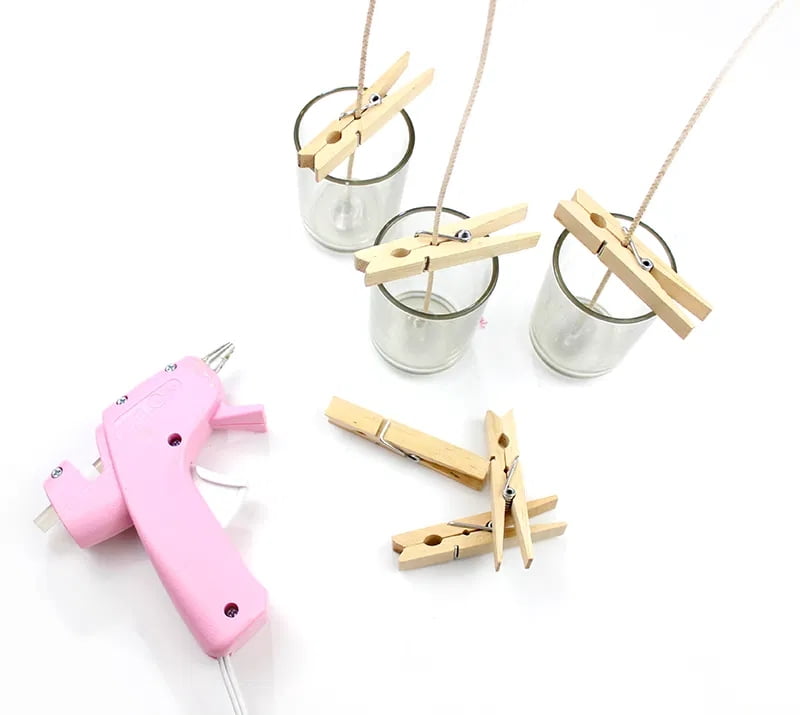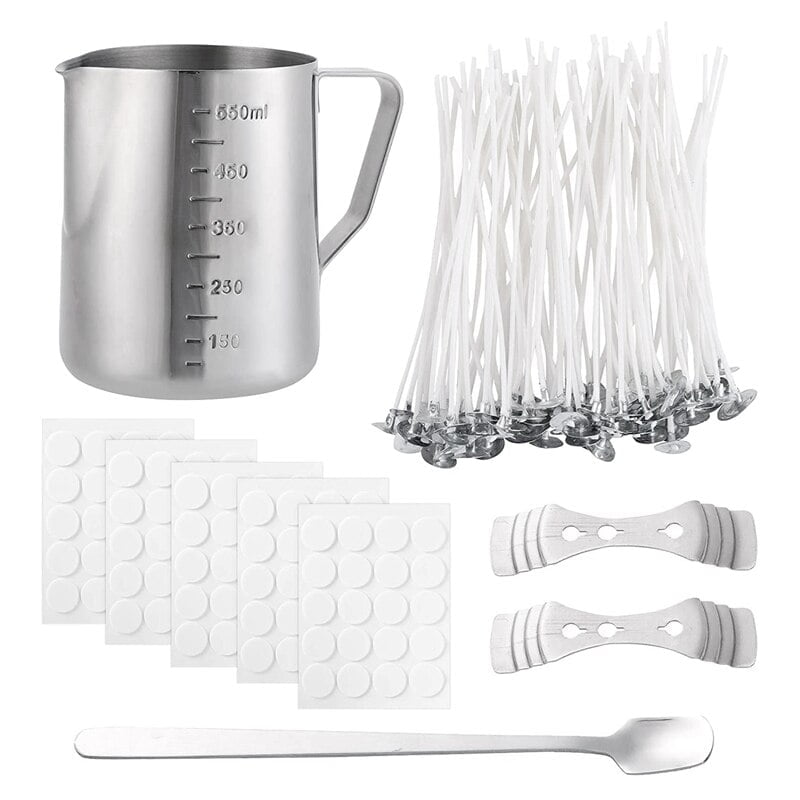Are you tired of dealing with the unpleasant smoke that comes from burning candles? In this article, we will explore the causes of candle smoke and provide valuable tips on how to make a candle smoke less. Understanding the factors that contribute to candle smoking and learning proper techniques for reducing smoke can help you enjoy a clean and pleasant candle-burning experience.
When it comes to creating a cozy and inviting atmosphere, candles play a significant role. However, dealing with excessive smoke can take away from the ambiance you are trying to create. By making simple adjustments in your candle selection and burning practices, you can minimize or even eliminate the smoke produced by your favorite candles.
Whether you are an avid candle enthusiast or simply enjoy lighting a few candles in your home on occasion, this article will offer practical insights into choosing the right type of candles, trimming wicks properly, using proper placement and burning techniques, as well as selecting quality materials – all of which can significantly reduce the amount of smoke produced by your candles. Read on to discover how to achieve a truly enjoyable, smokeless candle experience.
Understanding the Causes of Candle Smoke
Candles are a popular and versatile way to add ambiance to any space, but they can sometimes emit unwanted smoke. Understanding the causes of candle smoke is essential for creating a pleasant and clean burning experience. Several factors contribute to excessive smoke from candles, including the type of candle, the wick length, and improper burning techniques.
To reduce or eliminate candle smoke, it’s important to select the right type of candle. Beeswax and soy wax candles tend to produce less smoke compared to paraffin wax candles. Additionally, choosing candles with cotton wicks instead of metal-core wicks can help minimize smoke production. Opting for high-quality, natural materials in your candles will not only create a more enjoyable ambiance but also promote a cleaner burning experience.
Trimming the wick is another crucial step in making a candle smoke less. A long wick can cause uneven burning and excess smoke. Use scissors or a wick trimmer to keep the wick trimmed to about 1/4 inch before each use. This simple action will promote a steady flame and reduce soot and smoke production.
Proper placement of the candle can also affect its smoking tendencies. Avoid placing candles near drafts or air vents as this can cause erratic burning and excess smoke. Keep candles away from fans, open windows, or high-traffic areas to maintain an even burn and minimize smoking.
Incorporating these practices into your candle-burning routine will help you enjoy a cleaner and more enjoyable experience while minimizing unwanted smoke. By understanding the causes of candle smoke and implementing these tips, you can create a healthier environment while still enjoying the cozy glow of your favorite candles.
Choosing the Right Type of Candle
When it comes to making a candle smoke less, one of the most important factors to consider is the type of candle you are using. Different types of candles produce varying degrees of smoke, so choosing the right type of candle can greatly reduce the amount of smoke emitted during burning.
Opt for Clean-Burning Candles
One way to ensure that your candle produces minimal smoke is to choose clean-burning candles. Look for candles made from natural waxes such as soy wax, beeswax, or coconut wax. These types of waxes tend to produce less soot and smoke compared to paraffin wax, which is a by-product of petroleum.
Avoid Scented Candles With Synthetic Additives
While scented candles can add ambiance and fragrance to your space, they often contain synthetic additives that can increase the amount of smoke produced during burning. If you’re looking to minimize candle smoke, opt for unscented or naturally scented candles that don’t contain artificial fragrances or dyes.
Consider Lead-Free Wicks
In addition to the type of wax used, the wick in a candle can also impact its smoking behavior. Choose candles with lead-free wicks, as lead in wicks has been known to contribute to increased smoke production. Look for cotton or wooden wicks as they are known for producing less soot and smoke than traditional lead-core wicks.
By carefully selecting the type of candle you use based on its ingredients and materials, you can significantly reduce the amount of smoke produced when burning a candle. This not only helps create a cleaner and healthier environment but also enhances the overall ambience and enjoyment of your candle-lit spaces.
Trimming the Wick for Less Smoke
When it comes to making a candle smoke less, one of the most important factors to consider is the wick. A properly trimmed wick can significantly reduce the amount of smoke emitted by a candle. The length of the wick plays a crucial role in how clean and smoke-free your candle burns.
Here are some tips for trimming the wick to achieve less smoke:
- Use sharp scissors or a wick trimmer to cut the wick to about 1/4 inch before lighting the candle.
- Avoid cutting the wick too short, as this can cause the flame to drown in its own melted wax and result in smoking.
- Make sure to trim the wick every time before you light your candle to maintain an even and clean burn.
By following these simple steps, you can effectively reduce smoke and enjoy a cleaner, more enjoyable candle-burning experience.
Properly trimming the wick is just one of many ways to make a candle smoke less. By paying attention to this small detail, you can enhance your overall enjoyment of candles while minimizing any potential negative effects such as soot and smoke.
Using Proper Candle Placement
Importance of Proper Placement
The placement of a candle can have a significant impact on the amount of smoke it produces. Placing a candle in an area with proper ventilation and away from drafts can help reduce smoke. When the candle is placed in an area with good air circulation, it allows for better combustion and can result in less smoke being emitted.
Avoiding High-Traffic Areas
Placing candles in high-traffic areas where people frequently walk by can also lead to increased smoke production. As individuals pass by the candle, they disrupt the air around it, potentially causing the flame to flicker and produce more smoke. To minimize this effect, consider placing candles in areas where they are less likely to be disturbed.
Utilizing Candle Holders
Another factor to consider when it comes to proper placement is using appropriate candle holders. Using a stable and heat-resistant candle holder can help ensure that the candle remains upright and secure during burning. Additionally, choosing a holder that is designed to prevent drafts can further reduce the likelihood of excessive smoking.
By taking into account these factors and implementing proper placement practices, individuals can make a significant difference in reducing the amount of smoke produced by their candles. Making thoughtful decisions about where to place candles within a space can greatly contribute to enjoying a more pleasant and smokeless experience while burning them.
Proper Candle Burning Techniques
When it comes to making a candle smoke less, it’s essential to understand proper candle burning techniques. One important technique is to avoid drafts that can cause the flame to flicker and produce more smoke. It’s also important to place the candle away from air vents, ceiling fans, or open windows to minimize airflow around the flame.
Another key technique is to ensure that the entire surface of the candle melts each time you light it. This can help prevent tunneling, which is when a hole forms in the center of the candle, leading to an uneven burn and excess smoke. To achieve this, it’s recommended to burn the candle for at least one hour for every inch in diameter, allowing for a full melt pool.
Furthermore, using a candle snuffer instead of blowing out the flame can also contribute to less smoke. Blowing out a candle can cause wax and wick particles to scatter and burn at different rates, resulting in increased smoke production. By gently extinguishing the flame with a snuffer, you can help maintain a cleaner burning process and reduce smoke emission.
| Technique | Benefits |
|---|---|
| Avoiding drafts | Minimizes airflow around the flame |
| Ensuring full melt pool | Prevents tunneling and uneven burning |
| Using a snuffer | Reduces scattering of wax and wick particles |
Selecting Quality Candle Materials
Candles are a popular choice for adding ambiance to any indoor or outdoor space. However, some candles can produce a significant amount of smoke, which can be undesirable and even harmful. To minimize the smoke produced by candles, it is important to select quality candle materials.
When it comes to selecting quality candle materials, one of the most important factors to consider is the type of wax used. Soy wax and beeswax candles tend to produce less smoke compared to paraffin wax candles. Additionally, candles made from natural waxes like soy and beeswax are also more environmentally friendly and do not emit harmful chemicals when burned.
Another aspect to consider when selecting quality candle materials is the fragrance and color additives used in the candle. Some fragrances and dyes can contribute to increased smoke production when the candle is burning. By choosing candles with natural fragrances and minimal or no added dyes, you can help reduce the amount of smoke produced.
In addition to these factors, it is also important to choose candles with quality wicks that are specifically designed for clean burning. Wicks made from natural materials like cotton or wood tend to burn more cleanly than those made from synthetic materials. By carefully considering the materials used in the candles you purchase, you can enjoy a more enjoyable and smoke-free candle experience.
| Quality Candle Materials | Considerations |
|---|---|
| Type of Wax | Soy or beeswax versus paraffin wax |
| Fragrance and Color Additives | Natural fragrances and minimal dyes |
| Wick Quality | Natural materials like cotton or wood |
Conclusion
In conclusion, by understanding the causes of candle smoke and implementing the right techniques, you can enjoy a smokeless candle experience. Selecting the right type of candle, trimming the wick properly, using proper candle placement, and adopting quality candle materials are all crucial in ensuring that your candles emit less smoke. By taking these simple steps, you can create a more enjoyable and healthier environment while still enjoying the warm glow and ambiance of candles in your home.
Remember that not all candles are created equal, so it’s important to be mindful of the materials used in their production. Opt for candles made with high-quality ingredients to minimize smoke output. Additionally, paying attention to proper burning techniques can make a significant difference in reducing smoke. By following these guidelines, you can enhance your candle-burning experience and reduce any potential negative impacts on air quality.
By applying these strategies and being conscious of your candle choices and care practices, you can significantly minimize smoke production from your candles. The result will be a more enjoyable atmosphere where you can fully appreciate the beauty and tranquility that candles bring without worrying about excessive smoke. Ultimately, making a few simple adjustments can lead to a much more pleasant candle-burning experience for you and those around you.

Welcome to my candle making blog! In this blog, I will be sharing my tips and tricks for making candles. I will also be sharing some of my favorite recipes.





